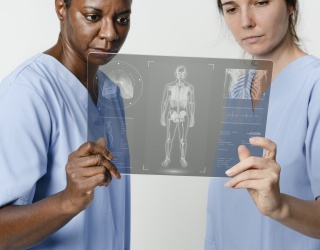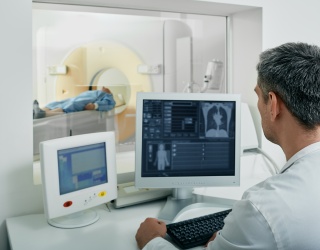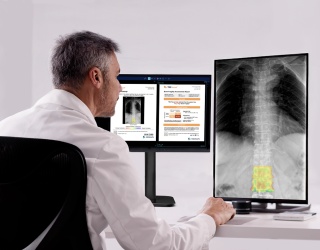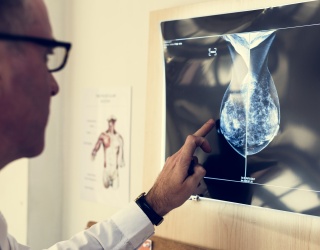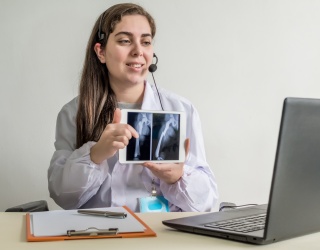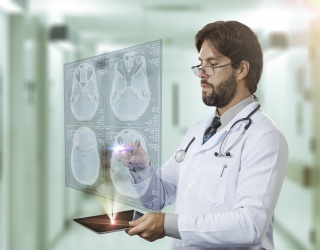Digital twins are moving beyond theory and proving their value in imaging departments. In radiology, the term “digital twin” can describe virtual counterparts of patients and organs, imaging systems such as CT or MRI scanners, or even entire departmental workflows. Each type generates distinct insights – from clinical simulation to equipment monitoring and process optimization.
As the conversation around digital twins in radiology continues to evolve, this article explores why they matter most for imaging leaders today. From cost control and uptime to safety, training, and analytics, these virtual models are reshaping how imaging teams operate and plan.
1. How Predictive Maintenance Keeps Imaging Systems Running at Peak Performance
Keeping scanners available is one of radiology’s biggest operational challenges. A system-level digital twin – a virtual model of a CT or MRI device – continuously monitors performance data to detect calibration drift or component wear early. This enables proactive rather than reactive maintenance, reducing downtime and extending equipment life.
A 2025 review in the Journal of Digital Imaging highlights how device-level digital twins support condition monitoring and uptime optimization in CT and MRI environments. For department heads, this means fewer disruptions, steadier budgets, and consistent throughput.
2. Smarter Scan Protocols: Using Virtual Simulations to Save Time and Improve Consistency
Protocol design often varies across operators or sites. Digital twins let radiology teams run virtual scans, testing different acquisition settings before scanning patients. The optimized protocol yields consistent image quality and fewer repeats.
A 2025 study in Bioengineering demonstrated that implementing a digital-twin-based MRI scheduling framework, combined with reinforcement learning, reduced average patient waiting times by 44.8 percent and increased scanner utilization by 14.5 percent in a high-complexity hospital setting. For imaging leaders, these results translate into measurable productivity gains and more efficient patient throughput.

3. Reducing Risk: How Digital Twins Improve Dose Control and Patient Safety
Dose management remains a core quality issue, especially in pediatric and oncology imaging. Digital twins combine patient-specific data with physics models to simulate dose distributions under different scan parameters. The resulting plans minimize exposure while maintaining diagnostic accuracy.
A 2024 review on digital twin construction using medical imaging describes how patient-level simulations can improve safety validation and compliance with frameworks such as the EU AI Act and the Medical Device Regulation (MDR). For hospitals, this translates to stronger governance without compromising efficiency.
4. Virtual Training Environments That Strengthen Radiology Teams
Departments face pressure to onboard staff quickly without impacting clinical schedules. Digital twins create realistic, interactive training environments – virtual scanners, patient positioning exercises, and troubleshooting scenarios – all without tying up real machines.
A 2024 study in the Journal of Medical Imaging and Radiation Sciences found that radiography professionals viewed digital-twin-based training positively, citing improved learning outcomes and fewer workflow interruptions. For department leaders, this means faster onboarding and greater staff confidence.
5. Turning Workflow Data Into Actionable Insights for Imaging Leaders
Beyond single exams, digital twins can mirror entire imaging workflows – from scheduling to reporting. Linking modality data, RIS/PACS logs, and performance metrics helps identify bottlenecks, track utilization, and benchmark efficiency.
The 2025 Journal of Digital Imaging review also emphasizes department-level applications, where workflow twins help leaders plan capacity, allocate resources, and measure ROI. For managers, this marks a shift from reactive oversight to data-driven leadership.
The Strategic Shift: Why Digital Twins Are Becoming Core to Imaging Operations
As imaging departments digitalize, digital twins are evolving from experimental pilots to operational backbones. They enable smarter planning, proactive maintenance, and evidence-based workflow management. For radiology leaders, this isn’t just optimization – it’s a strategic shift toward a continuously learning imaging ecosystem.
Learn more about what defines a digital twin in radiology and how the technology integrates into imaging workflows:



